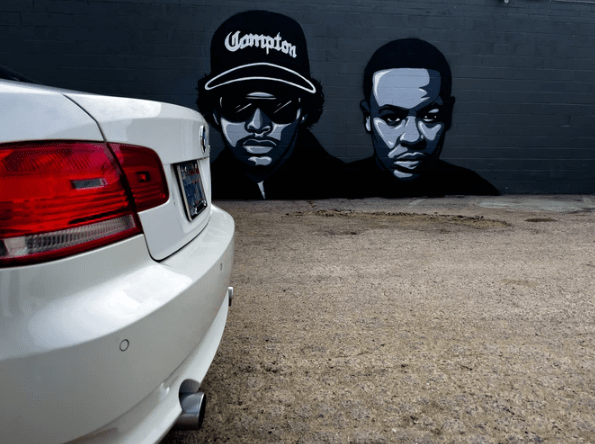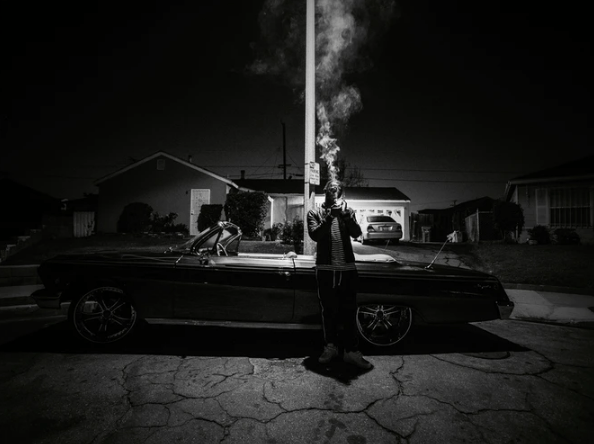When people think about some of the most influential artists in hip-hop, most of them would tell you that Dr. Dre should be on that list. Andre Romelle Young, better known in the industry by his stage name Dr. Dre, has become not only a successful hip-hop artist in his youth but also a prolific producer that has discovered young artists and made them rise into stardom. Because of his contributions to recording and producing, Dr. Dre is highly regarded as one of the best personalities in the hip-hop scene. To learn more about the artist, particularly his early years and rise to fame, here is an artist profile for Dr. Dre.
Early Years
Andre Romelle “Dre” Young was born on February 18, 1985, in Compton, California. When he was a kid, Dr. Dre attended Vanguard Junior High School in Compton, but because of the high gang violence in the area, he later transferred to Roosevelt Junior High School. In his freshman year in 1979, Dre attended Centennial High School but later transferred again to Fremont High School because his grades were poor.
Dr. Dre initially wanted to be a pilot, but because of his poor grades, he was not accepted at Northrop Aviation Company. He would later transfer to Chester Adult School in Compton because of her mother’s demands to either get to school or get a job. Realizing that academics were not for him, he briefly attended a radio broadcasting school and discovered his passion for music production, and chose to drop out of Chester in order to perform at Eve’s After Dark nightclub as a D.J.
With the World Class Wreckin’ Cru
At Eve’s After Dark nightclub, he would start watching D.J.’s and artists perform live on stage, but after a while, he was allowed to become a D.J. in the club. While being a D.J., he adopted the stage name “Dr. J,” which was inspired by famous basketball player Julius Erving’s nickname. At the nightclub, he would meet rapper Antoine Carraby, who would later become D.J. Yella of N.W.A. A few weeks after they first met, Dre would change his stage name to “Dr. Dre,” a combination of Julius Erving’s and his nicknames.
Dr. Dre and D.J. Yella would later join the World Class Wreckin’ Cru, a musical group that primarily focuses on electro music. Their biggest hit was Surgery, which was a track that was written by Dr. Dre and D.J. Yella even before the group was formed. Despite the success they had with their singles, the group would eventually disband in 1987.
Formation of N.W.A.
Dr. Dre met O’Shea Jackson, better known by his stage name Ice Cube, in 1986. For their numerous meetings, they collaborated to record tracks under Ruthless Records, an independent label owned by Eazy-E, another local rapper. When the World Class Wreckin’ Cru broke up in 1987, Eazy-E recruited Dr. Dre to be part of a new group he is forming called “N.W.A.” Dr. Dre would later recruit D.J. Yella and Ice Cube into the group, with Arabian Prince acting as producer and MC Ren recruited as both a rapper and a songwriter. N.W.A. would eventually become one of the most influential rap groups of all time, and they helped pioneer the gangsta rap subgenre that is still popular today.
When Ice Cube left the group in 1989 because of his financial disputes with Eazy-E and other members, it was Dr. Dre who performed mostly for the group’s second album, “Efil4zaggin.” After the release of the album, Dr. Dre also worked as a producer for many albums under Ruthless Records, particularly Eazy-E’s debut album “Eazy-Duz-It,” and D.O.C.’s debut album “No One Can Do It Better.”
Departure from N.W.A.
After the tension between Eazy-E and Dr. Dre began to become worse because of their dispute with the label’s finance and production, Dr. Dre left the group in 1991, the year when N.W.A. started to become more popular. Dre’s departure from the group was also influenced by his friend and fellow Ruthless Records artist D.O.C. and his then-bodyguard Suge Knight.
Suge Knight, who has recently formed a new record label called Death Row Records, encouraged Dr. Dre to become his flagship artist. Dr. Dre agreed, and he released his first solo single, “Deep Cover,” which features up-and-coming rapper Snoop Dogg, who Dre met after a meeting with Warren G. Dr. Dre would go on to release his debut album, “The Chronic,” on December 15, 1992. For the song on the album titled “Let Me Ride,” Dr. Dre won the Grammy Award for Best Rap Solo Performance in 1993.
Aftermath Entertainment
In March 1996, Dr. Dre left Death Row Records, as he was becoming suspicious of Suge Knight’s actions within the label. Later on, he would describe Knight as a corrupt and dishonest man. In the same year, Dr. Dre formed his own record label, Aftermath Entertainment. Dre would release “Dr. Dre Presents the Aftermath,” which features compiled songs of Dr. Dre and other newly signed artists for Aftermath Entertainment.
Aftermath Entertainment faced financial issues in its early years, as the albums that Dr. Dre produced were flops that had largely negative reviews. Despite the negativity surrounding Aftermath, Dr. Dre continued producing more albums, hoping that one artist will turn things around for the company. Eventually, Aftermath Entertainment found a jackpot when Jimmy Iovine, the then-head of Interscope (Aftermath’s parent label) introduced a young rapper named Eminem to Dr. Dre. Eminem soon would go on to become one of the best artists of Aftermath Entertainment while also being one of the most influential rappers of all time.
2001
On November 16, 1999, Dr. Dre released his second solo album titled “2001.” The album features Dr. Dre’s return to gangsta rap, which he abandoned after leaving N.W.A. and focused more on streamlined and mainstream rap and hip-hop music.
Dr. Dre’s second album is one of his most successful works, as it was certified six times platinum and was critically acclaimed. In 2000, Dr. Dre won the Grammy Award for Producer of the Year, Non-Classical for his producer role in his second album, and many more albums under Aftermath Entertainment.
Dr. Dre, the Producer
After the release of “2001,” Dr. Dre announced that he would be focusing more on producing singles and albums for other artists. Some of the remarkable albums that Dr. Dre produced include the Marshall Mathers LP by Eminem, Love for Sale by Bilal, The Eminem Show by Eminem again, and Get Rich or Die Tryin’ by rapper 50 Cent.
In 2004, Dr. Dre was attacked by a supposed fan Jimmy James Johnson, who wanted Dre’s autograph at the Vibe magazine awards show. According to Johnson, Suge Knight paid him $5,000 to assault Dr. Dre and embarrass him before the rapper claims his Lifetime Achievement Award during that evening. However, Knight denied the claims and reiterated that he wanted nothing but the best for his former friend Dr. Dre.
Compton
After many years of taking a break in recording his own music, Dr. Dre announced on August 1, 2015, particularly on his Beats 1 radio show called “The Pharmacy,” that he will be releasing his final album titled “Compton.” The compilation album, which many of his close friends and fellow Aftermath artists, was released on August 7, 2015. The album was well-received by critics, citing that Dr. Dre’s supposed final album is fitting as a retrospective of Dr. Dre’s varying musical styles and influences.
Despite not releasing a lot of music compared to his fellow hip-hop artists, Dr. Dre is still undoubtedly influential in the rap and hip-hop scene because of his ability to make other artists shine through their albums that he produced. We may not get another album from Dr. Dre, but it is sure that he will still produce the best albums for the artists he collaborates with.


